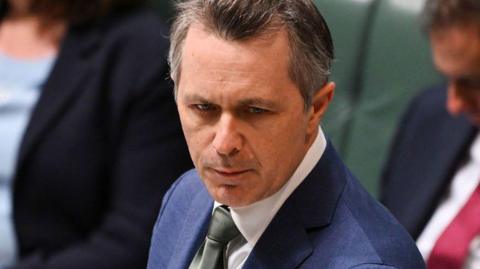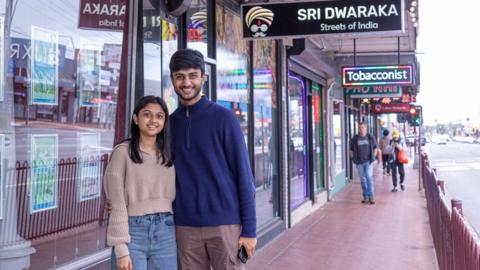For Anannyaa Gupta completing her studies in Australia has always been the "dream".
"Their education system is one of the best in the world," the 21-year-old, from the Indian city of Hyderabad, explains.
After completing her bachelor’s degree at Melbourne's Monash University in July, she applied for the master’s qualification she needs to become a social worker - the kind of skilled job Australia is desperate to fill amid labour shortages.
"I genuinely want to study here, offer my skills and contribute to society," she says.
But Ms Gupta is among current and prospective international students who have been swept up in a panic caused by the Australian government’s plan to slash foreign student numbers.
The new cap - which would significantly reduce new enrolments - is needed to make the A$47.8bn (£24.6bn, $32bn) education industry more sustainable, the government says.
It is the most controversial of recent measures that have also imposed tougher English language requirements on student visa applicants, and greater scrutiny on those seeking further study. Non-refundable visa application fees have also been doubled.
However, the sector and its supporters say they weren’t properly consulted, and that the changes could ravage the economy, cause job losses and damage Australia’s reputation, all while punishing both domestic and international students.
"[It] sends out the signal that Australia is not a welcoming place," says Matthew Brown, deputy chief executive of the Group of Eight (Go8), a body which represents Australia’s top ranked universities.
Education is Australia's fourth biggest export, trailing only mining products. Foreign students, who pay nearly twice as much as Australian students on average, prop up some institutions, subsidising research, scholarships, and domestic study fees. At the University of Sydney, for example, they account for over 40% of revenue.
But Prime Minister Anthony Albanese's government is facing pressure to reduce record levels of migration, in the hope of improving housing affordability and easing a cost-of-living crisis, ahead of a federal election next year. And international students - who totalled 793,335 last semester - have become a target.



